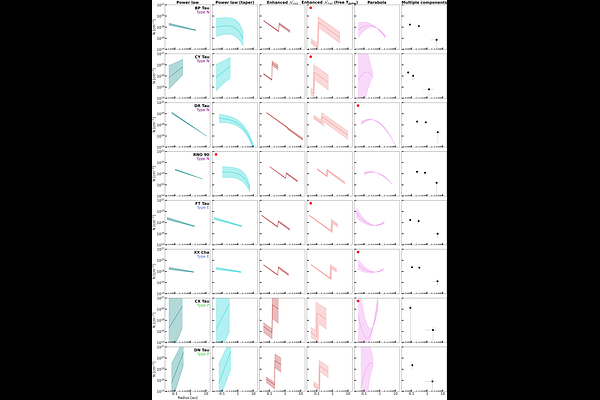MINDS. Water reservoirs of compact planet-forming dust disk: A diversity of H$_2$O distributions

MINDS. Water reservoirs of compact planet-forming dust disk: A diversity of H$_2$O distributions
Milou Temmink, Andrew D. Sellek, Danny Gasman, Ewine F. van Dishoeck, Marissa Vlasblom, Angèl Pranger, Manuel Güdel, Thomas Henning, Pierre-Olivier Lagage, Alessio Caratti O Garatti, Inga Kamp, Göran Olofsson, Aditya M. Arabhavi, Sierra L. Grant, Till Kaeufer, Nicolas T. Kurtovic, Giulia Perotti, Matthias Samland, Kamber Schwarz, Benoît Tabone
AbstractMillimetre-compact dust disks are thought to have efficient radial drift of icy dust pebbles, which has been hypothesised to produce an enhanced cold ($T<$400 K) H$_2$O reservoir in their inner disks. Mid-infrared spectral surveys, now with the James Webb Space Telescope (JWST), pave the way to explore this hypothesis. In this work, we test this theory for 8 compact disks ($R_\mathrm{dust}<$60 au) with JWST-MIRI/MRS observations. We analyse the different reservoirs that can be probed with the pure rotational lines ($>$10 $\mathrm{\mu}$m) through parametric column density profiles, multiple component slab models, and line flux ratios. We find that not all compact disks show strong enhancements of the cold H$_2$O reservoir, instead we propose three different classes of inner disk H$_2$O distributions. Four of our disks appear to have similar H$_2$O distributions as many of the large and structured disks (Type N or ``Normal'' disks), as is indicated by the slab model fitting and the line flux ratios. These disks have a small cold reservoir, suggesting the inward drift of dust, but it is not as efficient as hypothesised before. Only two disks do show a strong enhancement of the cold H$_2$O emission (Type E or cold H$_2$O enhanced disks), agreeing with the original hypothesis. The two remaining disks are found to be very H$_2$O-poor (Type P or H$_2$O-poor disks), yet show emission from either the hot or immediate reservoirs (depending on the fit) in addition to emission from the cold one. We find that different parametrisations are able to provide a good description of the observed H$_2$O spectra, with the multiple component analysis yielding similar results. Finally, we also report the detection of other molecules in these disks, including a tentative detection of CH$_4$ in CY Tau.